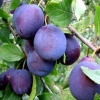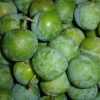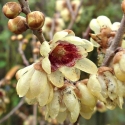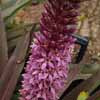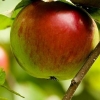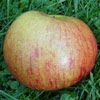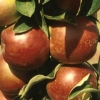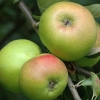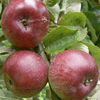Friday 31st August, 2018
Hi
Traps, Floods and Mildew - it must be spring!
The days are getting longer and the incessant spring rain keeps falling which, on a good note, is keeping the ground quite moist still... LOL understatement of the month... and the grass is growing... fast!!!
Harry's bull calves and heifers all seem to be knee deep in mud as the paddocks are so wet but there is plenty of food there.
I did a planting along the side of the
creek that runs through our place with some
Carex secta, just to make it all look attractive, but I reckon these poor grasses have been submerged for weeks on end at times. I know they can tolerate some moisture but total submergence is tough on any plant. Hopefully the water level will go down quickly so that the poor plants can breathe.
On that note the wet season is one reason why I don't advocate putting extra compost in the planting hole as compost absorbs water and keeps the soil wetter so those poor new feeder roots will rot off. Obviously if you have really sandy soil ignore this and add the compost to help retain some water. If you happen to be planting a new season tree, then treat them gently when taking out of the bag because if you are too rough you will break all the new feeder roots that are growing. I recommend you stake these new trees that don't have an established root ball to stop them rocking in the wind.
It's a great planting time because it is so moist and the plants are all entering their phase of growth so if you are hankering to get some fruit trees in then get them now as the selection is at it's best for the year.
Plums,
peaches and
nectarines are all in blossom, or about to be, bearing the promise of fruit in the months to come. We always manage to grow some fruit, on these plants in bags, in the nursery so if you get them in the garden now then you may get a few yourself. Don't forget that many of our fruit trees come as double or triple grafts so you can get multiple varieties of fruit on one tree for space limited areas.
Oldies but Goodies and some Newbies
Kolkwitzia Pink Cloud - The common name for this plant is 'Beauty Bush' and the botanical 'amabilis' means lovely so you know that this is going to be more than just a beautiful flowering shrub, absolutely stunning in flower. Somewhat like the Weigela or the apple blossom shrubs in form and flower but with its own delightful take. Bell shaped light pink blooms drape the arching branches in late spring, flaky bark that peels off in winter. Delightful and deciduous and another classic for the shrubbery.
Chimonanthus praecox luteus - We don't often have this grafted form of
Chimonanthus but its an awarding winning cultivar of the much loved and highly fragrant 'Winter Sweet'. Bright clear yellow waxy flowers appear in abundance on bare branches in winter and fill the air with their delicious fragrance.
Chimonathus praecox has stunning translucent soft lemon yellow blooms by comparison but they still pack a powerful fragrance. I would have to say this shrub would have to be one of my favourites and more so because it flowers during the coldest months. I like to pick stems of it to bring inside as the fragrance of it through the house is always divine.
Plant in sun or part shade, perhaps towards the back of the garden as it grows into quite the shrub reaching some 2 metres.
Eucomis comosa Sparkling Burgundy, or for those that like the common names... pineapple lily. Named, I guess, for its pineapple like appearance. Belonging to the Asparagus family and is best described as a bulbous deciduous perennial. Its leaves have just come up and out of their pots now. This particular form has very attractive burgundy foliage and the flowers when they come on are just drop dead gorgeous. I suggest mass planting this for effect and next to green evergreen foliage so that when its dormant you still have a great garden effect.
King fern I haven't quite got its new name in my head as I have always known it as Marattia but change we must and it is now Ptisana salicina. Get you tongue around that name, perhaps that is why I struggle to remember its name as I haven't quite sorted how I am going to pronounce Ptisana, don't say the P I think. I love King ferns and I remember on an island holiday seeing masses of them growing wild in the Bush. The king fern has giant fronds that come from the base crown and the foliage is quite dramatic. Sadly it has been grazed to almost extinction in the wild due to it being such a delicacy to pigs and deer.
Veltheimia Bracteata Pink I don't know this plant at all but Rose from one of our suppliers just raves about it and so I thought that I should get some to offer here. I have not seen it flower yet but the leaves are very cool... just to get started being very glossy green with quite wavy margins. I am guessing that this one is a little like Eucomis in that its a bulbous deciduous perennial that appears with it gorgeous foliage in spring and then produce
poker like flowers in a warm shade of pink.. Rose was telling me that she has hers in a pot and when its finished for the year she just puts the pot out of sight and doesn't care for it... apparently its that hardy. I'm guessing that come spring, a tickle with some pot fertiliser and those sexy new leaves will appear and then flower again. This one will do equally well or be at home in the garden too.
Potted strawberries
Camarosa - This delicious Strawberry has large, conical shaped, dark red fruit with firm flesh and an excellent flavour. The main crop is ripe around December-January. Shows good disease resistance. Plant in well drained fertile soil and provide afternoon shade for best results. PVR.
Strawberries can look very cool in pots so that the fruit hang and look attractive but you must use potting mix in the pots. If you plan on growing them in the garden usually they are planted on raised mounds and planted at 30 to 40cm spacing but to get the nitty gritty on these delicious fruits then take a look at our '
How to' page for more growing tips.
Its time to get those traps out.
Don't you just hate biting into an apple and looking to see just half a grub left or getting a whole crop of apples that are full of holes?
At this time of year, as the apples are about to blossom, the codling moth cocoon are getting ready for an adult moth to emerge. These cocoons will be found in the soil around your apple tree or under flaking bark on the trunk and stems and so on.
It's at this time of year that you need to get the codling moth Pheromone traps out that attract the males which get stuck on the sticky bits which of course means no sex, no eggs and, in a perfect world, no grubs. One trap will do approx 3 to 5 trees and will last approx 6 to 8 weeks after which time you will need to get a refill. It's recommended that you keep the traps going through the season because I believe that the moth can have several cycles through fruiting time.
If you have a heavy moth infestation then you may also combine the traps with a spraying programme using a caterpillar spray but you may need to do this several time through the fruit season.
For a more organic approach here's a recipe for a molasses trap to catch both the male and female moths.
To make the attractant, mix 1/2 cup of vinegar, 1/4 cup of molasses, and a few drops of household ammonia with about 300ml of water. Take some clean one-litre plastic milk bottles and cut a 30mm hole in the side of each about halfway up from the bottom, so the moths can enter the bottle. Pour 2-3cm of the attractant into each milk bottle, screw on the lid and hang three or four of these traps in each mature tree. Put them in place just as flowering ends and keep them fresh right through summer, washing them out every now and then to get rid of dead moths and to renew the attractant.
Other things you can do to reduce the risk of codling moth are to wrap rings of corrugated cardboard around the main branches and trunk during the growing season. Place the cardboard with the corrugations against the trunk and running down the tree. The aim is to offer a hiding place for larvae that have already fed on the fruit and are moving down the tree to find a place to pupate. They often settle in the corrugations of the cardboard, so replace it regularly and burn the infested pieces.
In winter, clear up all the vegetation under the trees rake up the old fruit, leaves and twigs to remove any over-wintering larvae that have made it to the ground. Clean any flaking bark from the trunk and branches of the apple trees as larvae shelter there too over winter. And do what you can to encourage birds such as silvereyes to inhabit the trees, as they are known to feed on a variety of small caterpillars, including codling moth larvae.
In the know.
Some new entries added to the
events page are 26th Oct to 4th Nov
Taranaki Fringe Garden festival, entry $2 per garden. Many of these gardens have
amazing displays of azalea, rhododendrons, magnolias and much more and the
Te Awamutu Altrusa Club garden ramble 4th November entry $25 per person. This is the 22nd Te Awamutu Altrusa Home and Garden Ramble which showcases 12 properties with 5 homes and 11 gardens on display.
Got the roses sprayed this morning before all were at work. Perfect timing for me because the day dawned fine and the spray will get to dry and clean up any potential new infections of downy due to the last couple of days of rain.
Its all about the timing and so spray before the rain and again after the rain is your best plan. If you have downy mildew on your roses try the
buxus blight spray and do two close sprays to see if you can gain control. Then spray before rain and again after. Extended fine periods seem to reduce the need for spraying.
Daffodil Day today, Fathers Day on Sunday, Daylight saving starts again at the end of September and the events on the social calendar will start to build as we work our way towards Christmas. It a busy time of year for all... take some time to spend in the garden, thinking that Matty the weather man suggested that Sat is going to be fine. Virginia here in the nursery in no uncertain terms told me that she doesn't believe the weather forecast any more. I suggested that she listens to it and then looks at the sky and makes up her own mind.
Have a fabulous weekend and a productive week.
Lloyd, Harry and the Wairere Team
Make it a Wairere weekend where even GNOMES know that gardening's not a drag.


